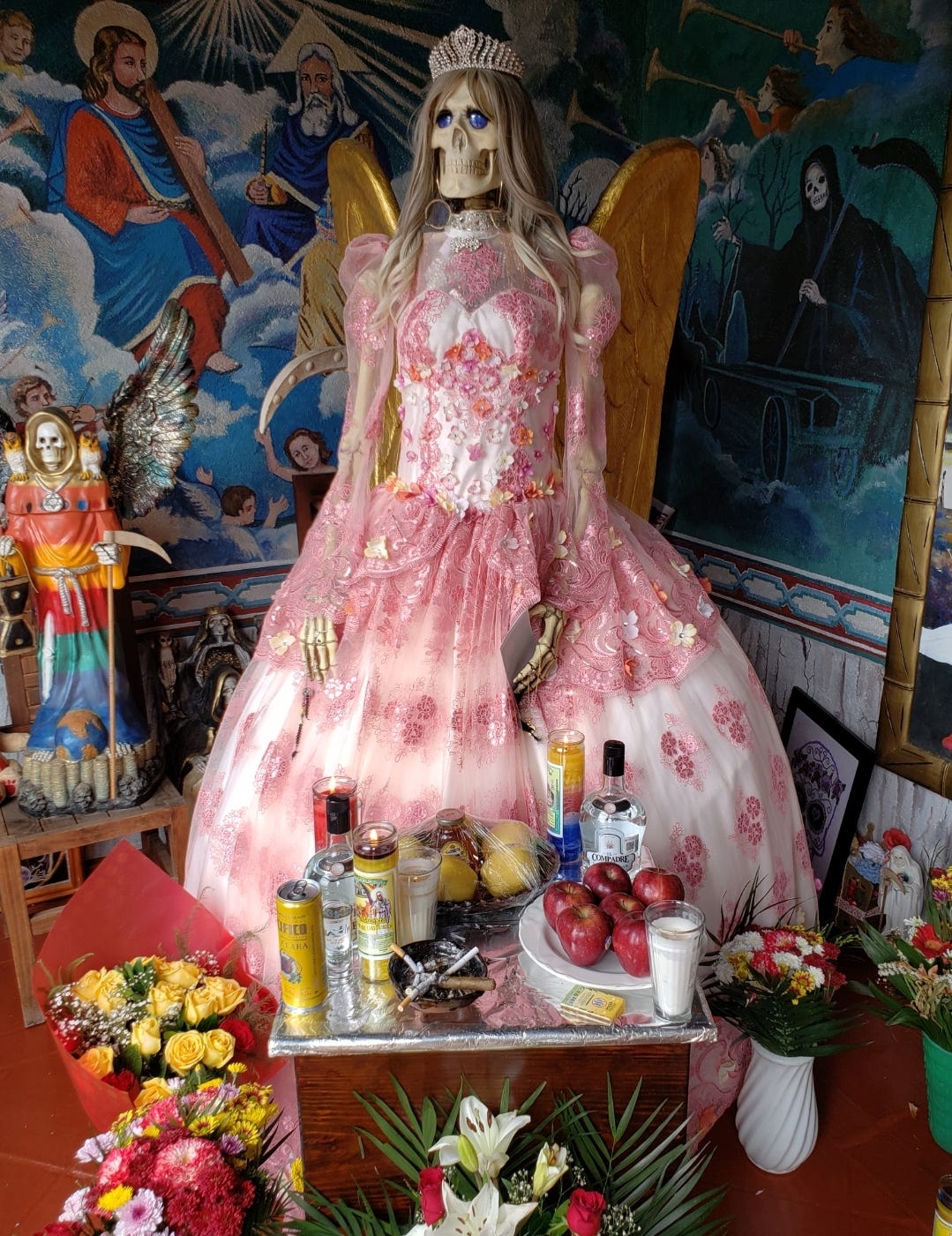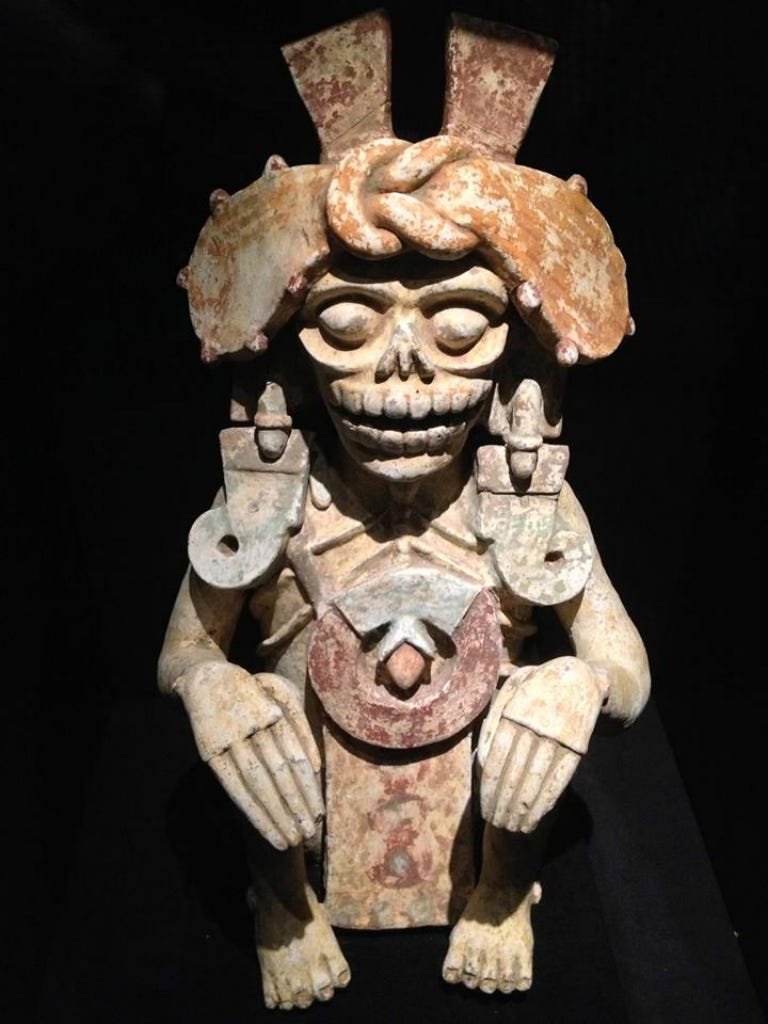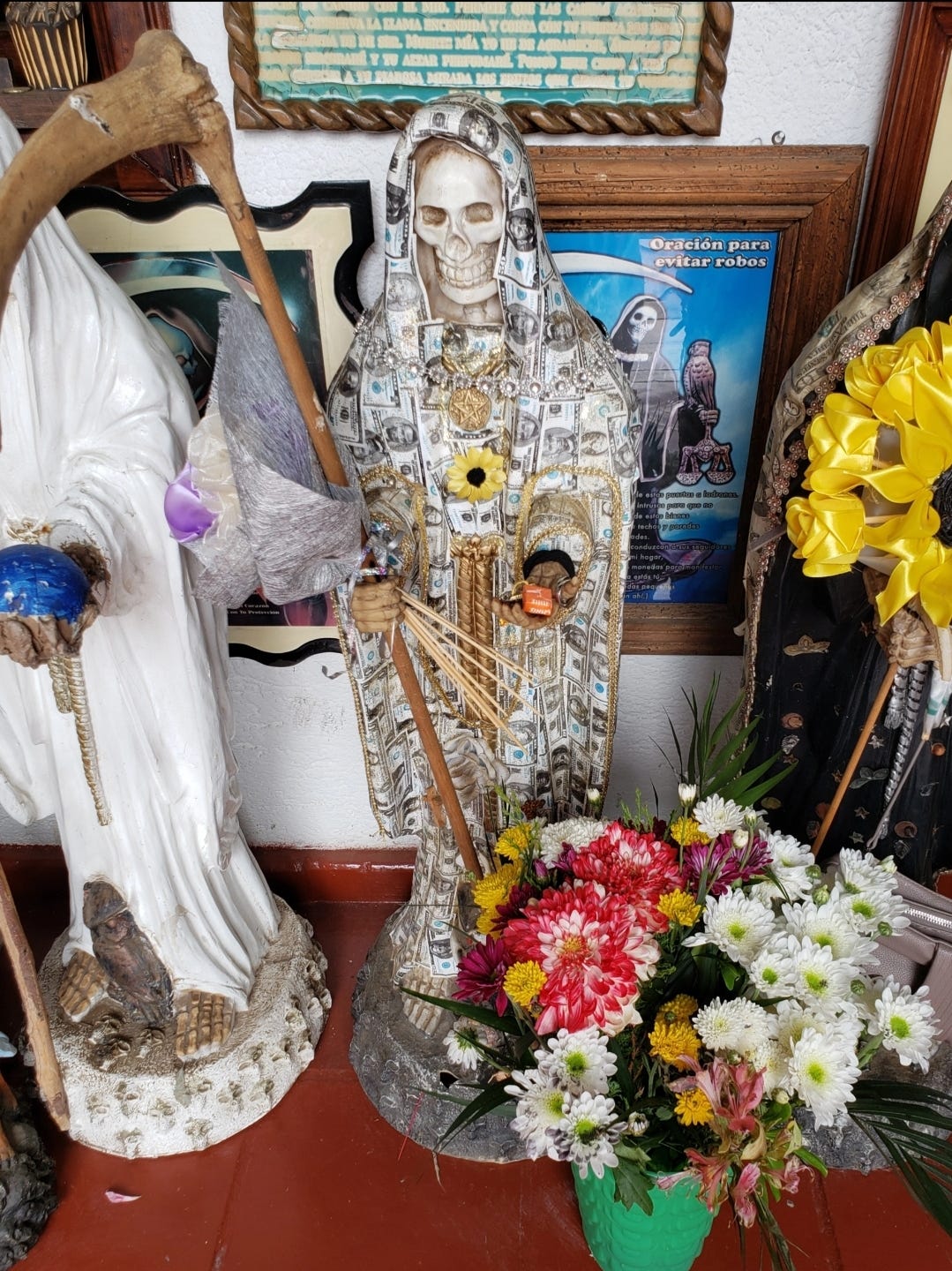Santa Muerte: Folk Saint of the Marginalized, Not an Agent of Satan

Santa Muerte, also known as “Holy Death,” is a folk saint venerated primarily in Mexico and the southwestern United States. With a growing international following, Santa Muerte has often been misrepresented and misunderstood, especially by religious and governmental authorities who have labeled the devotion as "Satanic." This assertion, however, lacks historical, theological, and anthropological basis.

Santa Muerte's origins are deeply rooted in syncretism, combining elements of indigenous Mesoamerican beliefs and Spanish Catholicism. Pre-Columbian civilizations, such as the Aztecs, had personifications of death, most notably Mictecacihuatl, the Queen of the Underworld. With the arrival of Catholicism during the Spanish colonization, these indigenous beliefs were blended with the Catholic pantheon, leading to the development of folk saints such as Santa Muerte.
Folk saints in Latin America often arise from a need for spiritual figures who address the lived experiences of the poor, marginalized, and disenfranchised. Santa Muerte emerged within this context as a figure of solace and protection. The association of Santa Muerte with death does not make her “Satanic.” In fact, death in many cultures, including within the Catholic tradition, is considered a part of divine providence rather than something inherently evil. The idea that a saint representing death is equivalent to Satanism reflects a superficial understanding of the cultural and theological framework surrounding Santa Muerte.

Santa Muerte is not a figure that exists outside of Christian contexts, and her iconography and practices clearly reflect Catholic influences. She is typically depicted holding a scythe and a globe, symbols commonly associated with Catholic images of the Grim Reaper or representations of death. The scythe is a reminder of the inevitable passage of life, while the globe represents her dominion over all humankind, indicating that death is universal and part of God’s plan. Additionally, her altars often feature Catholic symbols, such as candles, rosaries, and images of the Virgin Mary and Christ, underscoring the relationship between her devotion and Catholicism.
Santa Muerte’s devotees frequently engage in Catholic rituals like the recitation of the rosary, praying to her in a manner similar to the prayers offered to traditional saints. This integration of Catholic practices highlights the theological alignment of Santa Muerte with Catholic forms of worship rather than with Satanism. While the Catholic Church does not officially recognize Santa Muerte as a saint, her followers view her as a spiritual ally within the framework of their faith, making it inappropriate and unfounded to categorize her as a "Satanic" figure.
One of the primary reasons Santa Muerte has been labeled as “Satanic” is due to the widespread misunderstanding of her association with death. In Christian eschatology, death is not synonymous with Satan; instead, death is seen as part of the human condition and, for believers, a passage to eternal life. In fact, the Catholic tradition often reflects on death in a contemplative and holy manner. The inclusion of prayers for the dead, All Souls’ Day, and the veneration of saints like Saint Michael, who is often depicted defeating death, reveal that the focus on death is not inherently “evil” within Christianity.
Santa Muerte's role as a protector and guide for her followers through death does not conflict with Christian doctrines. Her devotees often pray to her for healing, safety, and justice, which are far removed from the typical associations of Satanic rituals, which tend to emphasize malice, violence, or chaos. While there are some devotees who may invoke her for morally ambiguous purposes, this reflects the misuse of her image, not her inherent character.
In contrast, Satanism—whether understood through the lens of Christian theology or through contemporary Satanist movements—presents an oppositional figure to God, marked by a deliberate rejection of Christian values. Santa Muerte is neither oppositional to God nor to the moral principles of Catholicism. Her followers do not see her as an adversary to God but as an intermediary figure who helps them navigate life's difficulties, including death. It is essential to differentiate between the theological role of a folk saint within Catholic traditions and that of Satanic entities, which are fundamentally antagonistic to Christian cosmology.

Another important factor to consider when rebutting the claim that Santa Muerte is Satanic is her social function. Many of her devotees are marginalized individuals, including the poor, LGBTQ+ people, drug addicts, and incarcerated persons. These groups, often excluded from mainstream religious and social systems, find in Santa Muerte a figure who does not judge them but offers protection and help in desperate situations.

Santa Muerte is considered a “people’s saint,” and her veneration represents the community’s need for a figure who understands their struggles. Calling her devotion “Satanic” ignores the socio-economic realities that lead people to her in the first place. Rather than promoting evil or harm, the devotion to Santa Muerte fulfills a spiritual and emotional need for many people living on society's fringes, offering them a sense of agency and protection that they cannot find elsewhere.
The labeling of Santa Muerte as “Satanic” reflects broader historical tendencies in Latin America and other parts of the world to demonize folk religions and indigenous practices. During the colonial period, the Spanish conquerors and missionaries sought to eradicate indigenous belief systems, often labeling them as “demonic” or “pagan.” This pattern continues today, as religious and governmental authorities frequently dismiss syncretic practices like Santa Muerte’s devotion as inherently evil or misguided.
Labeling Santa Muerte as "Satanic" is not only theologically inaccurate but also reinforces colonial-era stigmatizations of non-European belief systems. It ignores the deep historical roots and spiritual significance that Santa Muerte holds for her devotees. The ongoing demonization of folk religions contributes to social marginalization and perpetuates a misunderstanding of the complex ways in which people practice their faith.
The claim that Santa Muerte is “Satanic” is not supported by historical, theological, or anthropological evidence. Santa Muerte’s roots in Catholicism, her role as a protector of marginalized communities, and the syncretic traditions from which she emerged demonstrate that her veneration is not antagonistic to Christianity. Rather, she occupies a unique place within the broader landscape of Latin American folk spirituality. To label her devotion as "Satanic" reflects a misunderstanding of the complexities of folk religions and an oversimplification of the theological dimensions of death in the Catholic tradition. Rather than dismissing Santa Muerte’s significance, it is important to approach her veneration with cultural sensitivity and theological nuance.
References
Chesnut, R. Andrew. Devoted to Death: Santa Muerte, the Skeleton Saint. Oxford University Press, 2017.
Lomnitz, Claudio. Death and the Idea of Mexico. Zone Books, 2005.
Rousselle, Erich. “Santa Muerte and Popular Saints: A Modern Look at the New Religion of Death in Mexico.” Journal of Latin American Religious Studies, vol. 8, no. 3, 2015, pp. 234-256.
Aguilar, Filiberto. “The Religious Syncretism of Santa Muerte: From Indigenous Beliefs to Catholicism.” Mexican Journal of Folk Religion, vol. 6, no. 2, 2016, pp. 41-55.
Díaz, Teresa. “Understanding the Devotion to Santa Muerte: A Cultural and Theological Inquiry.” Journal of Mexican-American Studies, vol. 12, no. 1, 2018, pp. 75-95.



